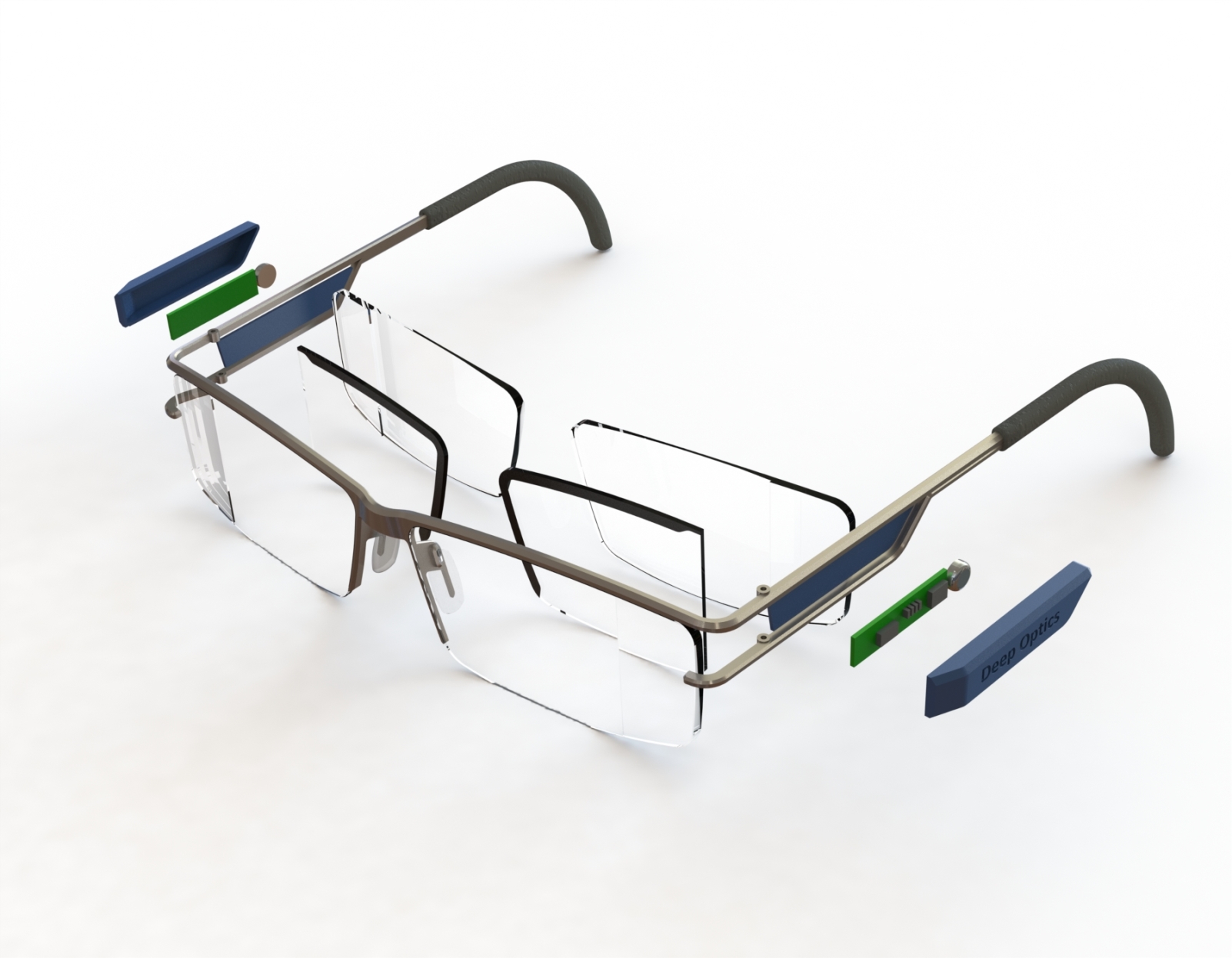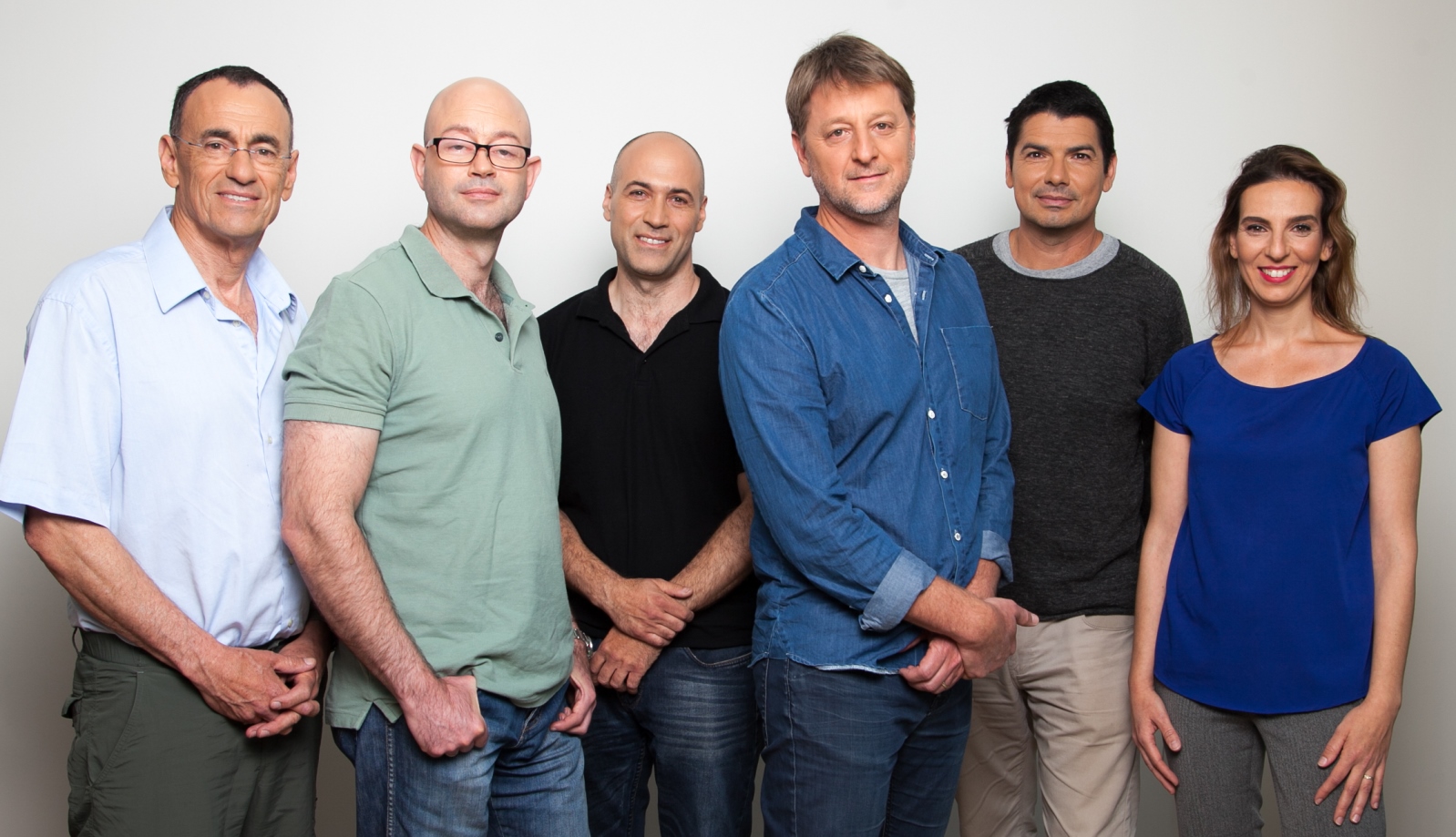Wearers of multifocals (“progressive” eyeglasses) must look through the top of the lenses for distance, through the middle for intermediate distance and through the bottom for close reading. Many people find it hard to adjust to the limited field of view per distance and even get headaches from the distortions.
If your progressive glasses could let you see about two years into the future, you’d notice an alternative on the horizon: Omnifocals from the Israeli company DeepOptics.
Already in development for three years, Omnifocals are positioned to be the first dynamic focal eyeglass lenses ever created.
They will consist of two layers: a regular static lens for far vision and a pixelated dynamic liquid-crystal lens for near and intermediate vision. This electronic pixelated lens constantly changes its optical power to adjust viewing distance based on data processed right in the frame from two hidden sensors tracking the wearer’s line of sight.

The electronic lens will cover most of the field of view of the eyeglasses to enable sharp vision of both near and far objects through any part of the lens. Millions of middle-aged eyeglass wearers will no longer have to tilt their heads up or down to see properly.
If you like this idea, you’re not alone. DeepOptics won the startup competition at the sixth annual Israel Machine Vision Conference in Tel Aviv last March, spurring the interest of potential investors and partners including manufacturers of optics for eyeglasses as well as virtual- and augmented-reality goggles.
Working prototype
Cofounder and CEO Yariv Haddad tells ISRAEL21c that the Petah Tikva-based company now has a working lens prototype and is developing a fully functional glasses system.
He explains that there are several approaches to implementing liquid crystal into lenses, but DeepOptics took a revolutionary approach, developing and patenting a method using a pixelated array. This approach offers several advantages, including the ability to change the eyeglasses’ prescription without the need for new lenses.
“Liquid-crystal optics have been out there for many years, but the ability to do good optical work with the dimensions required for glasses was not there until we developed our technology”
“We don’t know of others developing the type of glasses we are, and that’s interesting for many lens companies,” says Haddad. “Attempts have been made to do what we’re doing and so far we have the most promising results.”
Haddad has a background in high-tech R&D management in animation technology, medical technology and electro-optics for mobile phone cameras. He met his two cofounders, CTO Yoav Yadin and Chief Scientist Alex Alon, at Dblur Technologies, which was acquired by Tessera in 2009.
DeepOptics Chairman Saar Wilf teamed up with the threesome to bring his idea for dynamic focal lenses into reality. The goal is to make Omnifocals at a price point that will be competitive with traditional high-quality progressive glasses.

“The prototype proves our technology can deliver the desired specifications,” says Haddad. “Now we have the challenge of putting together a full system with the lenses and sensors. We plan to achieve that by summer 2016. Then we’ll put the technological challenges behind us and start working toward design and miniaturization, which will take about another year and a half.”
DeepOptics may launch an investment round in the next year as it continues its discussions with commercial partners for manufacturing, sourcing and possibly also distribution and sales.
For more information, click here.

















